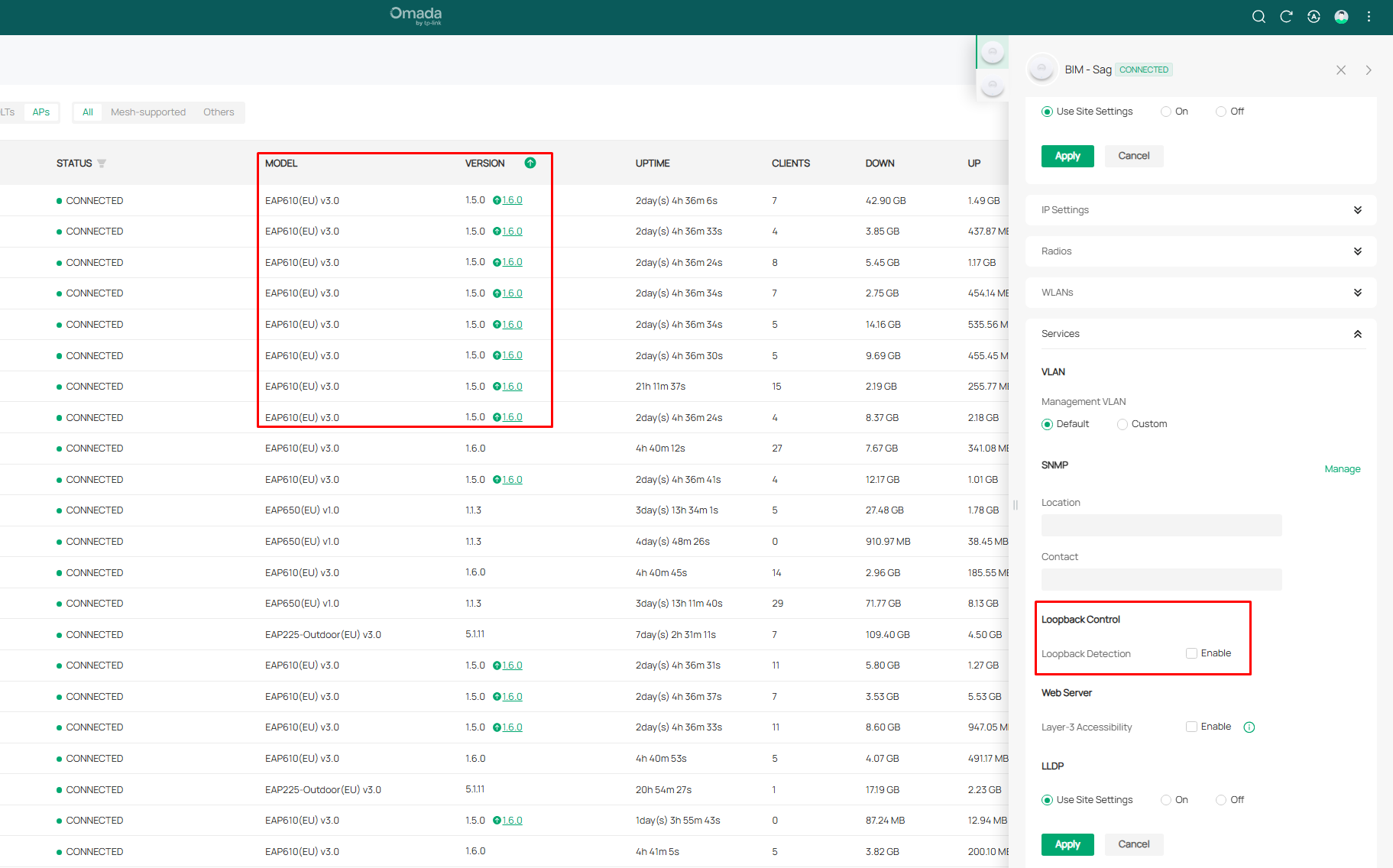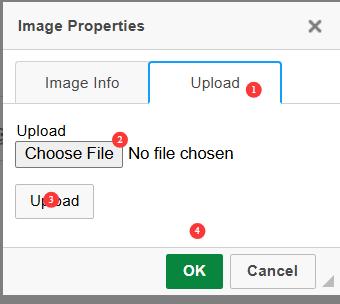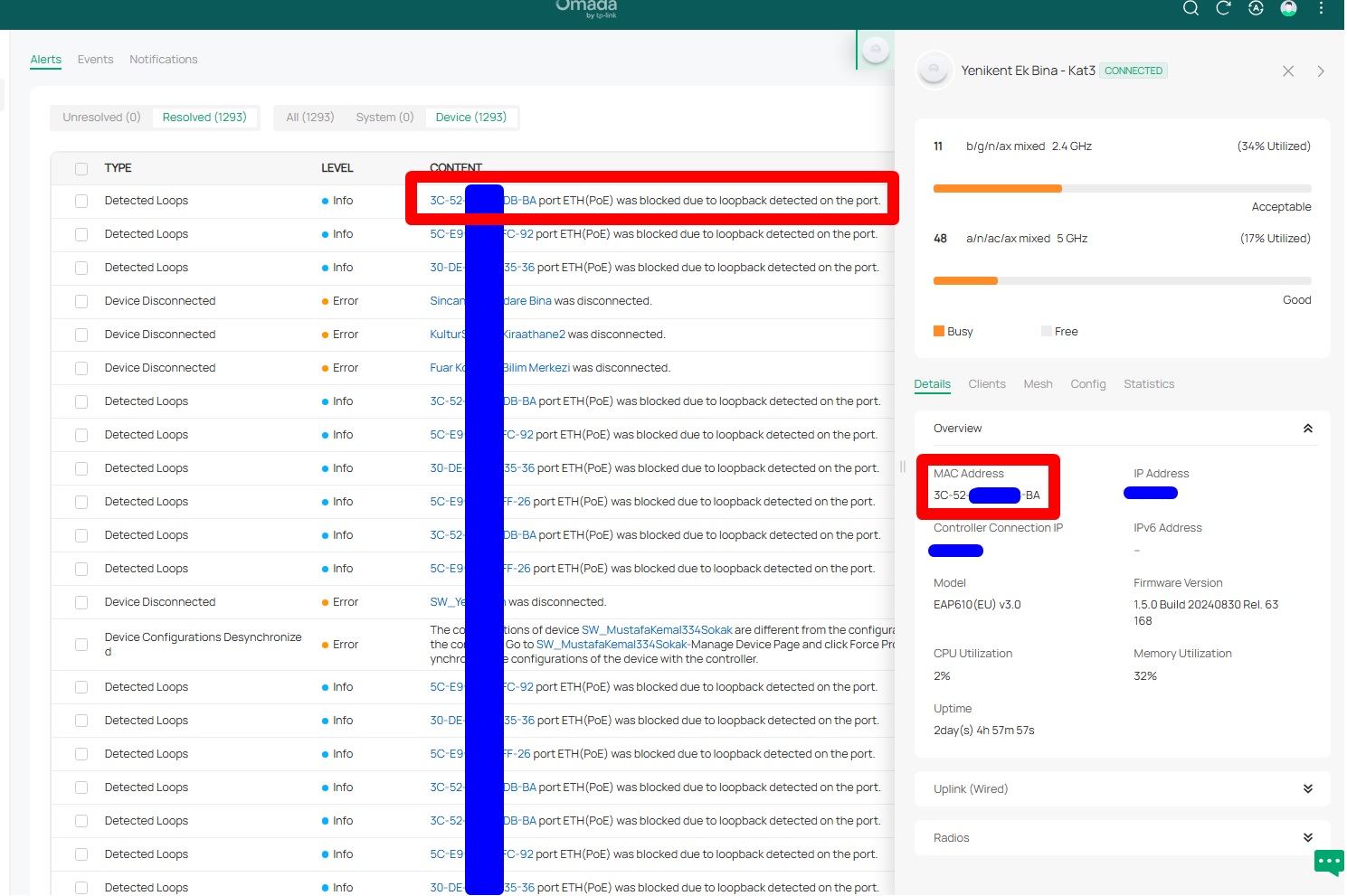Loop Detection Missing After Firmware Update from EAP Series devices – is it still active?
Hi TP-Link Support,
It seems that TP-Link’s recent firmware changes for EAP series access points have quietly removed the Loopback Detection (LPD) configuration option from the UI, even though the feature may still be active and affecting
I recently updated my EAP610 V3 access points to the latest firmware (v1.6.0 Build 20250507), and I’m using Omada Controller version 5.15.24.18.
After this update, I noticed that the Loopback Detection (or Loopback Control) setting is no longer visible under:
Site View > Devices > Properties > Config > Services
Previously, this option was available and enabled on all APs. Now, it seems to have been completely removed from the interface.
However, shortly after the update, I received logs from 4 different APs saying:
port ETH(PoE) was blocked due to loopback detected on the port.
This raises a few important questions:
-
Has Loopback Detection been automatically disabled in the latest firmware?
-
If it’s still enabled by default, is there any way to disable or manage this feature manually in the new version?
-
Was this change (removal of the LPD setting from GUI) intentional, and is there any changelog or documentation regarding this?
I’d really appreciate clarification, as I need to decide whether I should handle loop protection only on the switch side or if the APs are still enforcing it autonomously.
Thanks in advance for your support!
- Copy Link
- Subscribe
- Bookmark
- Report Inappropriate Content
Hi @kasva7
Thanks for all that info.
This EAP feature doesn't take effect on single-ETH-port devices. With only one port, the EAP itself cannot form a loop.
The log reports a loop detected on this port, but it was detected by the corresponding switch port, not the EAP.
To enable or disable this option, simply configure it on the switch.
The reason this option existed previously is that EAP610 and EAP615-Wall had identical implementations in this regard. Removing this option from EAP610 in this update is actually an optimization.
Thanks again for your feedback.
- Copy Link
- Report Inappropriate Content
Hi @kasva7
I don't think EAP ever had this feature before.
It's a switch's feature.

What's the model number of the switch you are using? Please configure it under the switch's Config page and see if it helps.
BTW, is the Internet affected?
- Copy Link
- Report Inappropriate Content
Hi @Vincent-TP
Contrary to your statement, Loopback Detection (LBD) was definitely available on the EAP series, at least in firmware version 1.5.0 Build 20250208 for EAP610 v3. I had it enabled on all my access points via Omada Controller.
After upgrading to version 1.6.0 Build 20250507 Rel. 66340, the Loopback Detection option disappeared from:
Site View > Devices > Properties (AP) > Config > Services
To verify this, I downgraded one of my APs back to firmware 1.5.0, and the LBD setting reappeared, exactly as expected. I'm attaching a screenshot to demonstrate this.
In addition, I am also attaching screenshot logs from earlier firmware versions where Loopback Detection triggered and blocked the ETH(PoE) port, clearly proving that the feature was functional and actively monitoring loops on the AP side, not just the switch.
Could you please clarify:
-
Was this feature intentionally removed in the latest firmware?
-
If not, is LBD still active in the background but now hidden from the interface?
-
If still active, how can we disable it (via SSH, CLI, or config override)?
Please forward this to your firmware/dev team if needed.
This is a serious configuration-level change that affects enterprise deployments with hundreds of EAPs like ours.
Thank you.

- Copy Link
- Report Inappropriate Content
@Vincent-TP Hi
Unfortunately, I’m having trouble uploading the log screenshots. Although I select and attach them before publishing the post, they disappear after I click “Post.”
I wanted to include the logs that show the “port ETH(PoE) was blocked due to loopback detected” messages from earlier firmware versions, but due to this issue I couldn’t attach them.
Please let me know if there’s an alternative way to share these files (email, support portal, etc.).
- Copy Link
- Report Inappropriate Content
Hi @kasva7
Thanks for all these detailed info.
I am confirming with firmware/dev team, please allow us some time.
- Copy Link
- Report Inappropriate Content
Please try this button:


kasva7 wrote
@Vincent-TP Hi
Unfortunately, I’m having trouble uploading the log screenshots. Although I select and attach them before publishing the post, they disappear after I click “Post.”
I wanted to include the logs that show the “port ETH(PoE) was blocked due to loopback detected” messages from earlier firmware versions, but due to this issue I couldn’t attach them.
Please let me know if there’s an alternative way to share these files (email, support portal, etc.).
- Copy Link
- Report Inappropriate Content
@Vincent-TP Hi;
I tried uploading the image using the method you suggested.

I uploaded this screenshot from the current 1.5.0 firmware, where the Loopback Detection setting is clearly visible and manageable.
Previously, when I was on version 1.6.0, LBD logs were still appearing, but as an end user, I had no control over the feature — the setting was completely missing from the interface.
This caused confusion because the feature was active, but there was no way to configure or disable it.
- Copy Link
- Report Inappropriate Content
Hi @kasva7
Thanks for all that info.
This EAP feature doesn't take effect on single-ETH-port devices. With only one port, the EAP itself cannot form a loop.
The log reports a loop detected on this port, but it was detected by the corresponding switch port, not the EAP.
To enable or disable this option, simply configure it on the switch.
The reason this option existed previously is that EAP610 and EAP615-Wall had identical implementations in this regard. Removing this option from EAP610 in this update is actually an optimization.
Thanks again for your feedback.
- Copy Link
- Report Inappropriate Content
Thank you for your response and clarification.
I would like to share some additional details based on my observations and experience:1. Loopback logs were generated even when the switch had no loop detection enabled.
In my network, none of the switch ports had Loopback Detection or STP enabled, yet the EAP610 was consistently generating loopback detection logs. I had intentionally left the LBD setting enabled on the EAP to investigate the root cause of these logs, even though no actual loop existed. So it's not accurate to say the switch alone detected the loop.2. After upgrading to firmware 1.6.0, LBD was not automatically disabled.
If LBD was previously enabled on the EAP610, the upgrade to 1.6.0 does not automatically disable the feature in the background. This could lead to confusion for administrators who can no longer see or manage the option in the UI but still get related logs.3. I understand that a loop can't occur on a single-ETH-port device.
I'm fully aware of this. However, I deliberately kept LBD enabled to monitor the behavior for troubleshooting purposes. It helped track potential anomalies or false positives within the network.4. This kind of change should be clearly noted in the release notes.
Removing a visible feature from the UI, especially one that might still be working silently in the background, should be documented in the firmware release notes. Otherwise, it causes unnecessary time loss for administrators trying to understand what changed.I appreciate your help and hope this feedback can be forwarded to your development or documentation teams. These clarifications would really help in large-scale deployments where every detail matters.
Additional Note:
I've seen that loop detection and related false-positive issues have been widely discussed in the community forums.
As someone managing a large-scale enterprise network, I believe there is a need for a more robust loop detection mechanism that can minimize false positives and provide clearer diagnostics.I'm sharing all this feedback with the intention of helping you improve the system further.
- Copy Link
- Report Inappropriate Content
Thank you very much for your valuable feedback. We truly appreciate your insights.
Regarding the loop log, we'd like to better understand your network topology. Please share a screenshot of the topology of the network.
Could you please let us know if you have the mesh function enabled? In some cases, wireless bridging between EAPs may inadvertently create loops.
- Copy Link
- Report Inappropriate Content
Information
Helpful: 0
Views: 729
Replies: 9
Voters 0
No one has voted for it yet.
